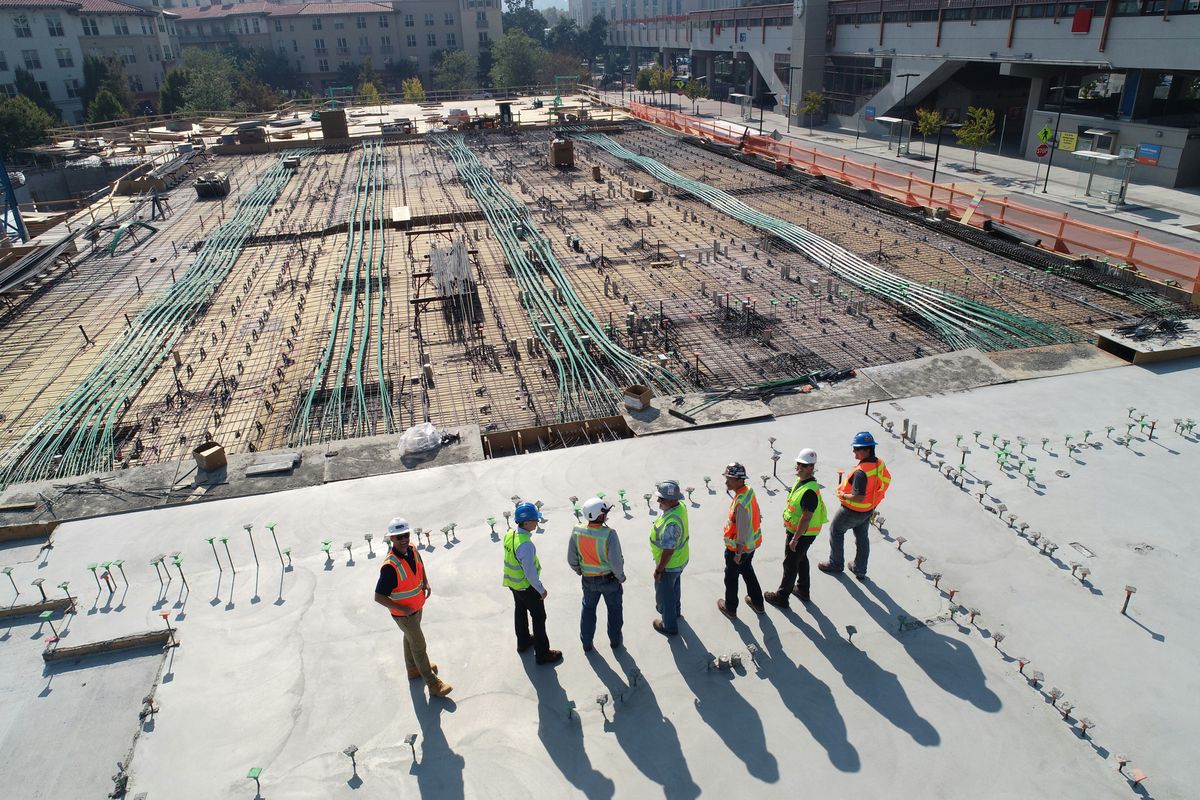When engaging in infrastructure projects between the USA and Saudi Arabia, managing the financial aspect is crucial, especially when it comes to late payments. The recovery system for such payments is typically a three-phase process that involves initial contact, the involvement of local attorneys, and a decision on litigation. This article explores the intricacies of dealing with late payments in USA-Saudi infrastructure projects, providing insights into the recovery system, communication strategies with debtors, financial implications, legal considerations, and decision-making for debt recovery.
Key Takeaways
- The USA-Saudi infrastructure project late payment recovery system involves a structured three-phase process, including initial contact, attorney involvement, and potential litigation.
- Effective communication with debtors is key, utilizing multiple channels and understanding the role of persuasion, negotiation, and legal notices.
- Late payments have significant financial implications, affecting cash flow and project financing, with costs and fees associated with recovery efforts needing careful assessment.
- Legal considerations are complex due to jurisdictional challenges and the need to understand international debt collection laws and the litigation process in the USA-Saudi context.
- Informed decisions on debt recovery require evaluating the likelihood of successful recovery, managing costs, and deciding between legal action and standard collection methods.
Understanding the Recovery System for Late Payments
Phase One: Initial Contact and Information Gathering
We kick off our Recovery System with decisive action. Within the first 24 hours, our team dispatches a series of communications to the debtor, marking the beginning of a relentless pursuit for resolution. Daily attempts to reach out are standard, employing every tool at our disposal: phone, email, text, fax. It’s a comprehensive skip-tracing and investigative effort to secure the most accurate financial and contact details.
Our goal is simple: establish contact, gather information, and set the stage for a swift resolution. We leave no stone unturned in this initial phase, ensuring we have a solid foundation for the recovery process.
If this phase doesn’t yield results, we’re prepared to escalate. Our affiliated attorneys stand ready to take the baton, applying local legal leverage to the situation. Here’s a quick glance at our initial contact strategy:
- Send the first of four letters via US Mail
- Conduct thorough skip-tracing and investigations
- Make daily contact attempts for 30 to 60 days
Remember, this is just the beginning. We’re committed to navigating through the complexities of the USA-Saudi infrastructure projects, ensuring that every avenue for recovery is explored.
Phase Two: Involvement of Local Attorneys
Once we escalate to Phase Two, our network of local attorneys becomes our frontline. They draft demand letters with the weight of legal letterhead, signaling serious intent. We’ve seen how this shift can spur debtors into action.
- The attorney sends the initial demand letter.
- Follow-up contacts via phone are made.
- A series of letters are dispatched if needed.
Our attorneys don’t just send letters; they’re on the phones, pushing for resolution. If this phase doesn’t yield results, we’re transparent about the challenges and our recommendations for the next steps.
We’re committed to enforcing payment terms and recovering funds. Our strategic approach includes a 3-phase Recovery System and considering litigation as a last resort for effective debt recovery.
Phase Three: Decision on Litigation and Potential Closure
At this juncture, we face a critical decision. If the debtor’s assets and case facts suggest low recovery odds, we’ll advise case closure, incurring no fees. Conversely, choosing litigation means weighing costs against potential gains. Upfront legal fees, typically $600 to $700, are necessary for court actions. Should we opt for litigation and it proves unsuccessful, we close the case, free of any further obligations.
Our rates are straightforward. For instance, claims under a year old are subject to a 30% collection fee, while older accounts or those under $1000 incur higher rates. Here’s a quick breakdown:
- Accounts under 1 year: 30% fee
- Accounts over 1 year: 40% fee
- Accounts under $1000: 50% fee
- Accounts requiring attorney involvement: 50% fee
We must carefully consider the financial implications of each path. The choice to litigate or not is pivotal, impacting not just the current project but our broader financial strategy.
In the end, our collective experience and understanding of the recovery system guide us. We strive for the most judicious and effective resolution, always mindful of the delicate balance between persistence and cost.
Strategies for Effective Communication with Debtors
Utilizing Multiple Communication Channels
We embrace a multi-faceted approach to reach out to debtors. Persistence is key; we employ emails, calls, and even text messages to ensure our message is heard. It’s not just about quantity, but also the quality of our interactions. We prioritize clear, concise, and respectful communication to maintain professionalism while asserting our position.
Our strategy aligns with effective communication strategies for debt recovery in industrial machinery trade with Saudi Arabia. We adhere to legal protocols and showcase our expertise in Saudi Arabian trade laws to facilitate a smoother recovery process.
We understand that every debtor situation is unique. That’s why we tailor our communication strategy to fit the individual case, ensuring we’re not just heard, but understood.
Here’s a snapshot of our communication efforts within the first 60 days:
- Daily attempts to contact debtors
- A series of letters sent at strategic intervals
- Skip-tracing to update debtor information
- Utilizing various communication platforms for outreach
The Role of Persuasion and Negotiation
We understand that navigating late payments requires more than just legal notices. It’s about understanding the business culture and building relationships. Our approach combines firmness with flexibility, aiming to persuade rather than coerce. We leverage contracts and seek mediation, always keeping open lines of communication.
- Initial contact is key, setting the tone for future interactions.
- We then engage in a dialogue, exploring all avenues for resolution.
- If necessary, we involve local attorneys who understand the nuances of Saudi Arabian trade.
Our goal is to manage late payments effectively, establishing clear terms and fostering strong relationships to prevent future issues.
Remember, the art of negotiation lies in finding a win-win situation. We strive to secure our clients’ interests while maintaining a positive rapport with debtors. This balance is crucial for long-term business success.
Understanding Legal Notices and Their Impact
We understand the gravity of sending legal notices to debtors. It’s a pivotal moment in the debt recovery process. Legal notices serve as a formal declaration of our intent to recover the debt, and they often spur debtors into action. The impact of these notices can vary, but they typically mark a shift in the dynamic between creditor and debtor.
- Legal notices can prompt immediate payment or open the door to negotiation.
- They may also escalate the situation, leading to litigation.
- Understanding the debtor’s response is crucial to determining our next steps.
We must weigh the potential outcomes and proceed with a strategy that aligns with our recovery goals. The issuance of a legal notice is not just a procedural step; it’s a strategic move that can define the course of our recovery efforts.
US construction companies face challenges in Saudi projects due to payment delays and cultural differences. Strategies like legal recourse, negotiation, and local expertise can aid in debt recovery.
Financial Implications of Late Payments
Assessing the Costs of Recovery Efforts
When we embark on the journey to recover overdue payments, we must first weigh the financial burden of this endeavor. The initial phase of recovery is a delicate balance of persistent contact and strategic information gathering, all while keeping costs in check. Our team’s efforts include a barrage of letters, calls, and skip-tracing, which, although essential, incur expenses from the outset.
Recovery rates play a pivotal role in our decision-making process. For instance, collecting on accounts less than a year old incurs a fee of 30% of the amount collected, while older accounts demand a heftier 40%. Smaller debts under $1000.00 are even more costly, with a 50% collection rate. These percentages are a testament to the complexity and resource intensity of the task at hand.
We must be judicious in our approach, ensuring that the cost of recovery does not eclipse the value of the debt itself.
Our table below succinctly captures the varying rates based on the age and size of the account:
| Account Age | Amount | Rate |
|---|---|---|
| < 1 year | > $1000 | 30% |
| > 1 year | > $1000 | 40% |
| Any age | < $1000 | 50% |
In light of these figures, we must consider the financial implications of each step. The decision to proceed with litigation is particularly weighty, as it involves additional upfront legal costs, typically ranging from $600 to $700. This does not even account for the potential loss if the litigation fails to yield the desired outcome.
Analyzing the Impact on Cash Flow and Project Financing
When we face late payments, our cash flow is the first to suffer. Delays can strangle our liquidity, making it tough to meet our own financial obligations. We must consider the ripple effects on project financing.
Financial delays in Saudi Arabia, for instance, pose challenges for US defense equipment suppliers. These disruptions impact not just cash flow but also the stability of operations. To combat this, we’ve learned to diversify revenue and explore trade finance options.
Here’s a snapshot of how late payments can affect us financially:
- Increased borrowing costs due to the need for short-term financing
- Potential project delays resulting from cash shortages
- Strained relationships with subcontractors and suppliers awaiting payment
We must always be prepared to adjust our financial strategies to maintain project momentum and financial health.
Understanding the financial implications is crucial for navigating these waters. We must assess, plan, and act to mitigate the risks associated with late payments.
Rates and Fees Associated with Collection Services
When we tackle late payments, understanding the costs of collection services is crucial. Our rates are competitive and structured to align with your recovery success. The more claims you submit, the lower the percentage we take.
For instance, for 1-9 claims, accounts under a year old are charged at 30%, while those over a year are at 40%. Smaller accounts under $1000 incur a 50% fee. Engaging an attorney? That’s a flat 50% across the board. Submit 10 or more claims, and these rates drop slightly, rewarding your bulk action.
Remember, if litigation is recommended and you proceed, upfront legal costs will apply. These typically range from $600 to $700, depending on jurisdiction.
Here’s a quick breakdown of our fee structure:
| Claims Submitted | Accounts < 1 Year | Accounts > 1 Year | Accounts < $1000 | Attorney Involved |
|---|---|---|---|---|
| 1-9 | 30% | 40% | 50% | 50% |
| 10+ | 27% | 35% | 40% | 50% |
We strive to maintain positive customer relationships throughout the recovery process, and we’re always mindful of the legal considerations, especially in the context of Saudi Arabia.
Legal Considerations in the USA-Saudi Infrastructure Context
Jurisdictional Challenges and Attorney Network
When we venture into the realm of international debt recovery, particularly between the USA and Saudi Arabia, we’re navigating a complex web of jurisdictional nuances. Navigating this landscape requires a robust network of local attorneys who are well-versed in the intricacies of both legal systems. Our approach hinges on leveraging these relationships to ensure that our recovery efforts are not just vigorous, but also compliant with local laws.
Jurisdictional challenges can significantly impact the recovery process. To address this, we’ve established a three-phase Recovery System, with each phase designed to escalate our efforts in a structured manner. Here’s a quick rundown:
- Phase One: Initial contact and information gathering, with daily attempts to reach a resolution.
- Phase Two: Involvement of local attorneys who draft demand letters and attempt to contact the debtor.
- Phase Three: Decision on litigation based on a thorough investigation of the debtor’s assets and the likelihood of recovery.
We must be prepared for the possibility that despite our best efforts, some cases may lead to a recommendation for closure. This is a reality we face head-on, ensuring our clients are well-informed throughout the process.
US tech firms in Saudi Arabian markets face challenges such as payment delays, legal issues, and cultural differences. Our strategies are designed to mitigate these risks by establishing clear payment terms, harnessing local expertise, and building strong relationships.
Understanding International Debt Collection Laws
When we venture into the realm of international debt collection, we’re navigating a complex web of laws that vary by country. We must be acutely aware of the legal frameworks governing debt recovery in both the USA and Saudi Arabia. The intricacies of these laws can significantly affect our strategies and outcomes.
Our approach is to tailor our efforts to the specific legal environment. For instance, in Saudi Arabia, the legal system is based on Islamic law, which can differ markedly from US law. This necessitates a nuanced understanding of the jurisdictional requirements and procedural differences.
To streamline our process, we’ve compiled a list of key considerations:
- Familiarity with local laws and regulations
- Understanding the statute of limitations for debt collection
- Knowledge of debtor protections and rights
- Awareness of permissible collection practices
It’s essential to align our collection tactics with these legal parameters to ensure compliance and maximize the likelihood of successful recovery.
Our website discusses challenges in collecting payments via litigation, securing payments from Saudi partners, resolving payment delays in health exports, and addressing non-payment in USA-Saudi trade. These insights guide our actions and inform our clients on the best course forward.
The Litigation Process and Its Consequences
When we decide to litigate, we’re committing to a path with significant implications. The decision to proceed with legal action is not taken lightly; it involves weighing the potential for recovery against the costs and risks. If litigation is deemed the right course, upfront legal costs become a reality. These can range from $600 to $700, depending on the debtor’s jurisdiction, covering court costs, filing fees, and more.
Litigation is a double-edged sword. On one hand, it can lead to the recovery of all monies owed, including legal expenses. On the other, should our efforts not bear fruit, the case will be closed, and no further fees will be owed to our firm or our affiliated attorney. It’s a calculated risk, one that requires careful consideration of the debtor’s assets and the facts of the case.
We must manage our expectations and be prepared for all outcomes. The process is demanding, but our expertise in navigating these waters ensures that we make informed decisions at every turn.
Here’s a quick look at our fee structure for collections:
| Claims Submitted | Accounts < 1 Year | Accounts > 1 Year | Accounts < $1000 | Attorney Placed Accounts |
|---|---|---|---|---|
| 1-9 | 30% | 40% | 50% | 50% |
| 10+ | 27% | 35% | 40% | 50% |
These rates are competitive and tailored to the specifics of each claim, ensuring that we remain aligned with our clients’ best interests while pursuing debt recovery.
Making Informed Decisions on Debt Recovery
Evaluating the Probability of Successful Recovery
When we assess the likelihood of recovering overdue payments, we must weigh the facts meticulously. The debtor’s financial status and asset base are critical indicators of the potential for successful recovery. If our investigation suggests a low probability, we recommend closing the case, sparing you unnecessary expenses.
Persistence is key, yet knowing when to cease efforts is equally vital. Here’s a snapshot of our decision-making process:
- Thorough investigation of the debtor’s assets
- Daily attempts to contact the debtor for 30 to 60 days
- Evaluation of the case by local attorneys
We must balance the costs against the chances of recovery. If the odds are not in our favor, we advise against throwing good money after bad.
Our fee structure is transparent, with rates varying based on the age and size of the claim, and whether an attorney is involved. For instance, accounts under one year incur a 30% fee, while those over a year are charged at 40%. Legal action introduces upfront costs, but if litigation fails, you owe us nothing.
When to Opt for Legal Action versus Standard Collection
Deciding between legal action and standard collection hinges on a critical assessment of the debtor’s situation and the likelihood of recovery. We must weigh the costs against the potential benefits. If the debtor’s assets and the facts suggest a slim chance of recovery, standard collection remains our path. However, when the odds are in our favor, legal action becomes a viable option.
Litigation is a serious step, involving upfront costs such as court fees, typically ranging from $600 to $700. These costs are a necessary investment when the probability of successful recovery justifies the expense. Our rates reflect the complexity and age of the claims, ensuring a competitive edge in the recovery process.
We’re committed to a transparent and strategic approach, guiding you through the decision-making process with clarity and purpose.
Here’s a quick breakdown of our rates for different scenarios:
- Accounts under 1 year: 30% (1-9 claims) or 27% (10+ claims) of the amount collected.
- Accounts over 1 year: 40% (1-9 claims) or 35% (10+ claims) of the amount collected.
- Accounts under $1000.00: 50% of the amount collected.
- Accounts placed with an attorney: 50% of the amount collected.
Our strategy is to minimize your risks while maximizing the chances of recovery. We’ll guide you through each phase, ensuring that every decision is informed and every action is calculated.
Managing Costs and Expectations in the Recovery Process
In our pursuit of debt recovery, we must balance the urgency of recouping funds with the practicality of the costs involved. Weighing the potential return against the expenses is crucial. Our experience shows that debt recovery challenges in Saudi projects often involve cultural nuances, legal intricacies, and procedural delays. By leveraging debt recovery services, we harness local expertise and connections to navigate these complexities efficiently.
Our phased approach to recovery is designed to minimize costs while maximizing the chances of success. Here’s a snapshot of our fee structure:
- Phase One: No upfront fees; efforts include letters, calls, and skip-tracing.
- Phase Two: Cases forwarded to local attorneys; fees contingent on recovery.
- Phase Three: Decision on litigation with potential upfront legal costs.
Our rates are competitive, with a sliding scale based on the age of the account and the number of claims. For instance, accounts under one year in age are charged at 30% of the amount collected for 1-9 claims, and 27% for 10 or more claims.
It’s essential to remember that not all debts are worth the chase. Evaluating the debtor’s ability to pay and the size of the debt is paramount. We must manage our expectations and choose the most cost-effective path to recovery.
Navigating the complexities of debt recovery requires expertise and a strategic approach. At Debt Collectors International, we offer specialized solutions across all industries, ensuring that your unique challenges are met with unparalleled results and performance. Whether you’re dealing with dispute resolution, skip tracing, or judgment enforcement, our experienced team is ready to serve you. Don’t let unpaid debts disrupt your business—take the first step towards financial stability by visiting our website and learning how we can support your debt recovery needs. [Visit our website] for a free rate quote and start collecting what’s rightfully yours today.
Frequently Asked Questions
What happens within 24 hours of placing an account for debt recovery?
Within 24 hours, a series of actions are initiated including sending the first of four letters to the debtor, skip-tracing and investigating the debtor for financial and contact information, and our collector making daily attempts to contact the debtor through various communication methods for the first 30 to 60 days.
What occurs during Phase Two of the debt recovery process?
In Phase Two, the case is forwarded to a local attorney within our network who will send a series of letters on law firm letterhead and attempt to contact the debtor by phone. If these attempts fail, we will provide a recommendation for the next step.
What are the possible recommendations at the end of Phase Three?
The recommendations can be either to close the case if recovery is unlikely, at no cost to you, or to proceed with litigation which requires payment of upfront legal costs. If litigation is unsuccessful, the case will be closed without any additional cost.
What are the upfront legal costs if I decide to proceed with litigation?
If you choose to proceed with litigation, you will be required to pay upfront legal costs such as court costs and filing fees, which typically range from $600.00 to $700.00, depending on the debtor’s jurisdiction.
How are the rates for debt collection services determined?
Rates for debt collection services are competitive and tailored, depending on the number of claims submitted and the age and amount of the account. They range from 27% to 50% of the amount collected, with specific rates for accounts under 1 year in age, over 1 year in age, under $1000.00, and those placed with an attorney.
What happens if debt recovery attempts through litigation fail?
If attempts to collect via litigation fail, the case will be closed, and you will owe nothing to our firm or our affiliated attorney for these results.





